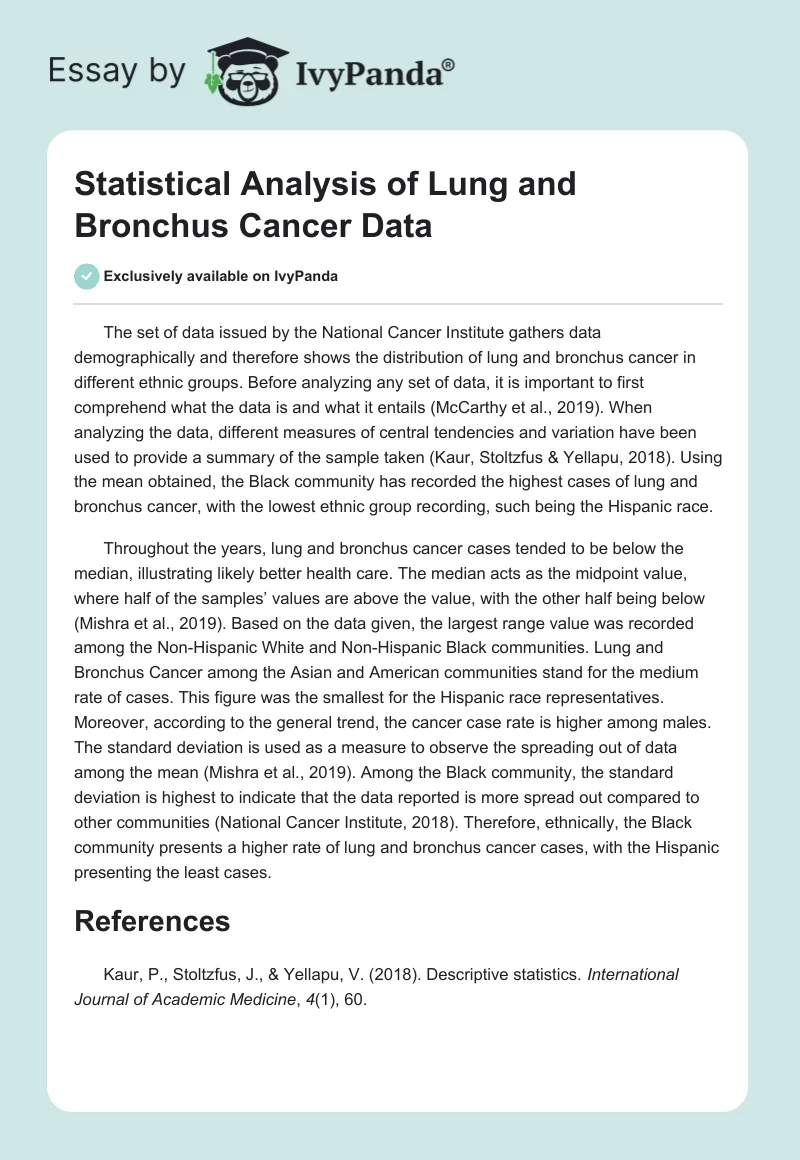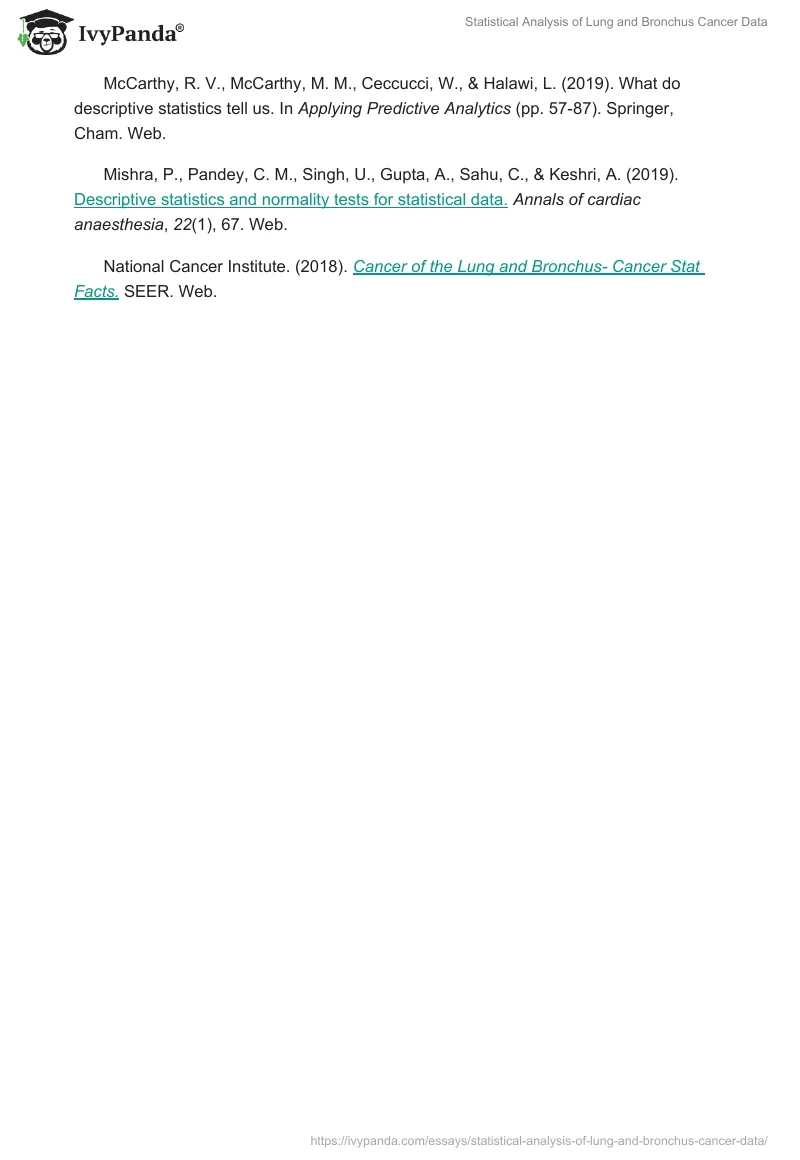The set of data issued by the National Cancer Institute gathers data demographically and therefore shows the distribution of lung and bronchus cancer in different ethnic groups. Before analyzing any set of data, it is important to first comprehend what the data is and what it entails (McCarthy et al., 2019). When analyzing the data, different measures of central tendencies and variation have been used to provide a summary of the sample taken (Kaur, Stoltzfus & Yellapu, 2018). Using the mean obtained, the Black community has recorded the highest cases of lung and bronchus cancer, with the lowest ethnic group recording, such being the Hispanic race.
Throughout the years, lung and bronchus cancer cases tended to be below the median, illustrating likely better health care. The median acts as the midpoint value, where half of the samples’ values are above the value, with the other half being below (Mishra et al., 2019). Based on the data given, the largest range value was recorded among the Non-Hispanic White and Non-Hispanic Black communities. Lung and Bronchus Cancer among the Asian and American communities stand for the medium rate of cases. This figure was the smallest for the Hispanic race representatives. Moreover, according to the general trend, the cancer case rate is higher among males. The standard deviation is used as a measure to observe the spreading out of data among the mean (Mishra et al., 2019). Among the Black community, the standard deviation is highest to indicate that the data reported is more spread out compared to other communities (National Cancer Institute, 2018). Therefore, ethnically, the Black community presents a higher rate of lung and bronchus cancer cases, with the Hispanic presenting the least cases.
References
Kaur, P., Stoltzfus, J., & Yellapu, V. (2018). Descriptive statistics. International Journal of Academic Medicine, 4(1), 60.
McCarthy, R. V., McCarthy, M. M., Ceccucci, W., & Halawi, L. (2019). What do descriptive statistics tell us. In Applying Predictive Analytics (pp. 57-87). Springer, Cham. Web.
Mishra, P., Pandey, C. M., Singh, U., Gupta, A., Sahu, C., & Keshri, A. (2019). Descriptive statistics and normality tests for statistical data.Annals of cardiac anaesthesia, 22(1), 67. Web.
National Cancer Institute. (2018). Cancer of the Lung and Bronchus- Cancer Stat Facts.SEER. Web.


